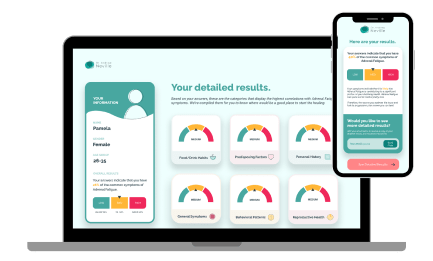When Relaxation Exercises Feel Out of Reach
Do you feel like you’re “on” all the time? Wired or anxious, even though there may be nothing to be wired or anxious about? Perhaps you feel like your body is actually buzzing. If so, you may also regard relaxation exercises with some trepidation.
You’re not alone.
All that buzzing and worrying is from an overactive stress response, or as most people know it better, a constant state of “fight-or-flight.”
One of the key practices to calming and healing is a relaxation exercise regimen. You may scoff now, but I assure you, it’s possible for even the most anxious of us!
Stress Versus Relaxation Physiology
Your body’s physiology is like a seesaw: one side of the seesaw is stress physiology (fight or flight), and the other is relaxation physiology (rest and digest). These sides should be in balance. You need both working together to live.
Adrenal Fatigue is a dysfunction of your body’s stress response system. It means your body has been stuck in a stress response (fight or flight) for too long and too often. Our stress response system then gets stuck in overdrive. It creates tremendous wear and tear on our system, not to mention all that anxiety. As you can imagine, too much wear and tear without enough healing and repair is not a recipe for health and well-being.
Relaxation physiology is the opposite, the state where you not only rest and digest, but also where you heal and repair. That’s the state we’re searching for, and I promise you can get there.
How to Access Relaxation Physiology
Life demands that you stimulate your stress physiology all too often—anywhere from sitting in traffic to exposure to chemicals in our food to the death of a loved one. This excess of stress means we have to pursue its opposite, actively, and forcibly.
The most effective way to turn on rest and digest physiology is with a consistent form of relaxation exercise.
I know it seems like every influencer and blog in the “well-being” world has advice about relaxation activities. I’m here to tell you that there’s science behind every bit of that advice, but there’s more to it than reading a book or going for a walk.
“Forced” Relaxation Exercises May Be Different Than What You’re Used To
There are activities that may relax you, like doing a puzzle, streaming TV, gardening, or cooking your favorite meal. These things are helpful and certainly have their place, but what you need to access is something very different.
The most efficient and effective stimulation of each and every healing mechanism in your body through forcing rest and digest. That is done by specific mind-focusing exercises, specifically activities such as meditation, deep breathing, guided imagery, or visualization.
You Decide What Relaxation Exercise Is Best
A relaxation exercise does not have to be anything complex. You don’t have to learn anything at all. All you do is find a spot that’s quiet and comfortable, sit or lie down, close your eyes, and focus on one thing. When your mind drifts, which it will, just grab it and return to your focus. Simple.
Some people choose to focus on a word; they may use one such as health, peace, love, or strength. This is meditation. Others choose to repeat memorized phrases, like a short prayer or mantra.
Some people focus on their breath, deep breathing. Still others choose visualization and focus on a picture. It doesn’t matter to your body what you choose to focus on, as long as it works for you.
There is a lot of information and instruction on the numerous ways to accomplish this, and everyone seems to think that their way is the best. Some sources may tell you that if you do it any other way, then you’re doing it wrong. Nonsense. The best way is the way that works for you, the way that you’ll stick with it.
When and How Often Should You Force Relaxation?
The process is simple: consistent, daily, timed focus. This is not a mind wandering exercise; this is a focus exercise. Start slowly, but set time aside for it! Start with 5 minutes twice a day, then move to 10 minutes twice a day. For some of us, the act of sitting still with possibly intrusive thoughts seems unbearable. It is a practice, an exercise. And just like everything else in life, practice makes you more skilled.
This part of healing may seem inconsequential. Perhaps because of how “simple” it is or how little time it takes. I assure you, though, forced relaxation and getting into the state of relaxation physiology is as important as several of the other puzzle piece of healing.
Healing is about putting enough of those puzzle pieces together at the same time. When all those pieces are in place, the body shifts into rest-and-digest physiology and true healing begins. The proven, clinical way I do this is by my Trilateral Healing Approach.
Enjoy a visualization exercise from Dr. Neville’s Relaxation Library





















